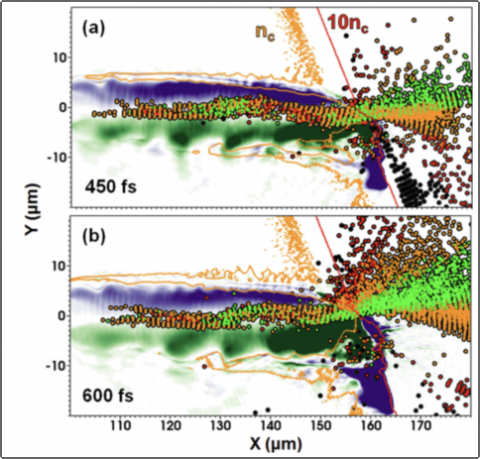J. Peebles, A. V. Arefiev, S. Zhang, C. McGuffey, M. Spinks, J. Gordon, E. W. Gaul, G. Dyer, M. Martinez, M. E. Donovan, T. Ditmire, J. Park, H. Chen, H. S. McLean, M. S. Wei, S. I. Krasheninnikov, and F. N. Beg, "High-angle deflections of the energetic electrons by a voluminous magnetic structure in near-normal intense laser-plasma interactions", Phys. Rev. E 98, 053202 (2018).
The physics governing electron acceleration by a relativistically intense laser is not confined to the critical density surface; it also pervades the subcritical plasma in front of the target. Here particles can gain many times the ponderomotive energy from the overlying laser and strong fields can grow. Experiments using a high-contrast laser and a prescribed laser prepulse demonstrate that development of the preplasma has an unexpectedly strong effect on the most energetic, superponderomotive electrons. The presented two-dimensional particle-in-cell simulations reveal how strong, voluminous magnetic structures that evolve in the preplasma impact high-energy electrons more significantly than low-energy ones for longer pulse durations and how the common practice of tilting the target to a modest incidence angle can be enough to initiate strong deflection. The implications are that multiple angular spectral measurements are necessary to prevent misleading conclusions from past and future experiments.
